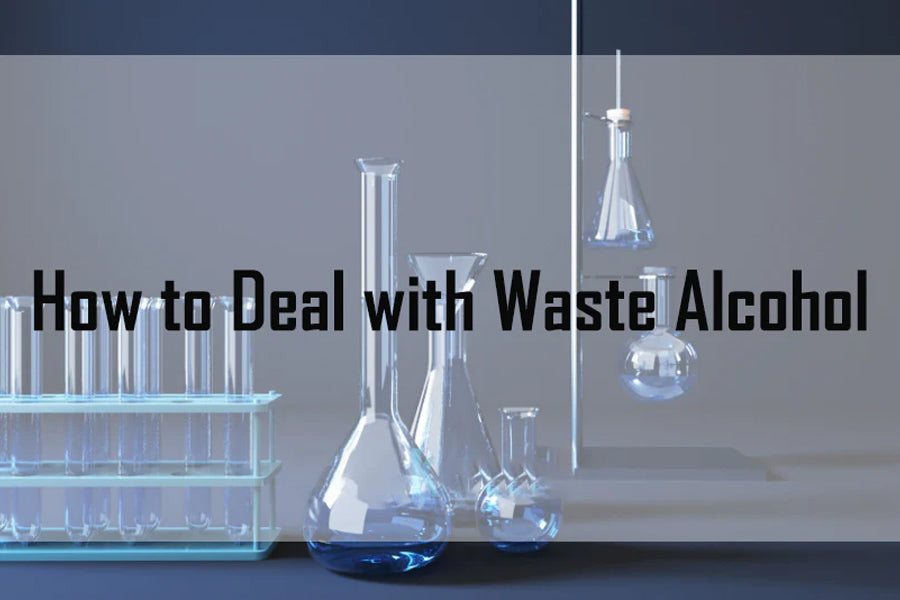To dispose of dirty IPA/Ethanol/Alcohol, you should never pour it down the drain. Instead, locate your local household hazardous waste (HHW) disposal site or event to drop it off.
For small quantities of uncured resin residue, you can pour the IPA into a tray and let it evaporate in the sun in a well-ventilated outdoor area until the resin solidifies, then dispose of the solid waste in the trash.
How Resin Builds Up in Alcohol
As you wash finished prints with IPA/Ethanol, the uncured resin will be stripped off and mixed with the alcohol.
As time goes on, the alcohol will be saturated with more uncured resins to the point where it becomes counter-productive to wash in it. Here is how to make the best use and dispose of dirty alcohol with resins.
Using Dirty Alcohol as a First Wash
It is an excellent practice to have two buckets of alcohol, one is dirtier, and one is clean and fresh alcohol. The purpose is to use the cloudy alcohol to do the first wash to remove most of the uncured resin before moving to the pure batch for the final wash.
This will make the alcohol last longer by keeping the clean batch fresh and having a way to use dirty but still usable alcohol.

Image source: Youtube: @VogMan
When Alcohol Becomes Too Cloudy
At some point, the dirty alcohol will be so cloudy that you can no longer use it to clean effectively. You will have two options. Recycle if your alcohol is IPA or dispose of.
To learn how to recycle IPA, you can watch this video by VOG:
Read our article, Key Considerations for Using Castable Resins with Wax-Like Material, to learn practical tips for successful resin printing.
How To Dispose Dirty Alcohol
Do not dump dirty alcohol into sewage! It can have devastating on marine lifeforms!
The proper way and most energy efficient to process IPA/Ethanol is to let it evaporate via sunlight. This will cure the resins in the alcohol while removing the alcohol.
Please do this outdoor, not in an enclosed space. Do not try to boil the dirty alcohol. It is not a safe practice. For places that do not get much sunlight or during the Winter season, IR light can help remove the alcohol quickly.

Why Dirty IPA/Ethanol/Alcohol Is Hazardous
- Flammable: Even when dirty, IPA and ethanol remain highly flammable.
- Toxic to the environment: If poured down drains, they can contaminate water systems and harm aquatic life.
- Legally regulated: Many regions classify IPA and ethanol waste as hazardous waste, requiring proper disposal.
Bottomline
Safely disposing of dirty IPA, ethanol, or alcohol protects both the environment and your workspace. Avoid drains, use recycling or evaporation methods, and follow local hazardous waste rules.
With simple practices like the two-bucket system, you can extend alcohol use, reduce waste, and keep your 3D printing process sustainable.
By reading our guide, 3D Filament Types: Complete Guide for Every 3D Project, you’ll discover the best materials for every print.
Frequently Asked Questions
What to do with dirty IPA?
You can reuse it for a first rinse, recycle it with a distillation unit, or dispose of it safely through evaporation or hazardous waste facilities.
How to dispose of expired 70% isopropyl alcohol at home?
Small amounts can be evaporated outdoors in a shallow tray. Large amounts should be taken to a hazardous waste collection site.
How to dispose of ethanol alcohol?
Treat ethanol the same way as IPA: never pour it down the drain. Use hazardous waste services or evaporate small amounts safely.
Is IPA considered hazardous waste?
Yes, both clean and dirty IPA are flammable and often classified as hazardous waste. Always check local regulations before disposal.
How to recycle IPA alcohol?
Recycling can be done through distillation or filtration, allowing you to reuse the alcohol multiple times and minimize waste.


2 comments
Troy Telford
My brother is a chemist, and I asked about distilling wash alcohol. His advice to me: Don’t. Even if I don’t burn down or blow up, I’m left with a vat of much more toxic sludge to deal with on the other end, and very contaminated equipment.
Professional chemists just barrel their HAZMATS up and let the professionals take care of it, and he told me to do the same. He then pointed out that my city accepts ‘household amounts’ for free.
Buying a few liters of fresh alcohol is not free, but neither is my health. As a bonus, fresh alcohol hasn’t absorbed water from the air. The old alcohol is definitely more than 5% water.
Earl Hackett
There’s no way I’d distill a flamable liquid with that setup in the videol
Home Depot offers a VEVOR
3 Gal. Wine Distiller with Condenser for $85. Stainless steel and copper tube construction.